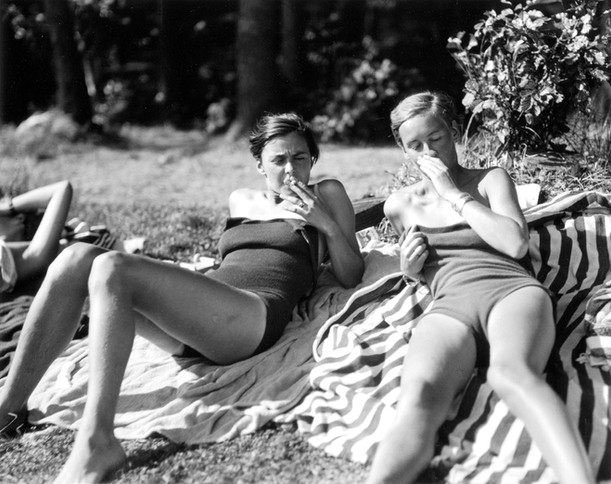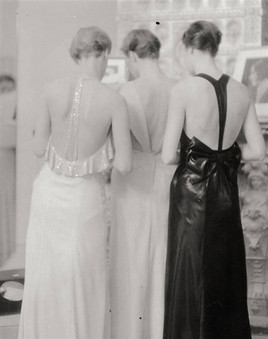Marianne Breslauer - Gifted Gallery
- Lilium

- Feb 21, 2021
- 3 min read

Marianne Breslauer, born 20 November 1909, was a German photographer, photojournalist and pioneer of street photography during the Weimar Republic.

Marianne was born in Berlin, the daughter of the architect Alfred Breslauer and Dorothea Lessing (the daughter of art historian Julius Lessing).
She began her career with lessons in photography in Berlin from 1927 to 1929, and she admired the work of the then well-known portrait photographer Frieda Riess and later of the Hungarian André Kertész. In those two years she joined the avant-garde group of Berlin artists, such as Paul Citroen and Umbo, whose portraits she made.
In 1929 she took part in the major exhibition Film und Foto in Stuttgart, and then, having graduated, settled in Paris.
While living in Paris she went on long wandering walks during which she photographed people, things and street scenes, in the manner of someone like Kertész, having seen reproductions of some of his works in Berlin. Her images were hallmarked by subjects on the sidelines of the beauty of a Paris, and by original compositions, akin to those of the Nouvelle Vision. She experimented with both the high-angle shots and diagonal shots.
In the same year in Paris, she briefly became a pupil of Man Ray, whom she met through Helen Hessel, a fashion correspondent for the Frankfurter Zeitung and family friend. Man Ray encouraged Breslauer to "go her own way without his help." A year later she started work for the Ullstein photo studio in Berlin, headed up by Elsbeth Heddenhausen, where she mastered the skills of developing photos in the dark-room. Ullstein was a publishing house specialising in fine arts and human sciences and Breslauer worked there as a photo reporter. Until 1934 her photos were published in many leading magazines such as the Frankfurter Illustrierten, Der Querschnitt, Die Dame, Zürcher Illustrierten, Der Uhu and Das Magazin.
Breslauer's work demonstrates an interest in overlooked or marginalized subjects. Her earlier work in Paris, encouraged by the surrealist Man Ray, focused on the homeless along the river Seine. Her portraits show influence from the photographic experiments of Bauhaus students and the contemporary style Neues Sehen. Nonetheless, her photography conveys a strong personal interest in and approach to capturing dynamic motion, conveyed partially through her selection of bustling urban settings.
When asked in an interview what made a good shot, Marianne Breslauer answered at once and without hesitating:
"You know because people don’t walk past it in an exhibition, because people are attracted by a page in a magazine or stop browsing a book. Neither technical perfection nor striking subject matter are decisive; what matters is the power of the image, the expression –the secret of the moment captured–".
- Marianne Breslauer
In the early 1930s, Breslauer traveled to Palestine and Alexandria, before traveling with her close friend, the Swiss writer, journalist, and photographer Annemarie Schwarzenbach in a Mercedes Mannheim to the Spanish Pyrenees. She met Schwarzenbach through Ruth Landshoff whom she photographed many times. She described Schwarzenbach as: "Neither a woman nor a man, but an angel, an archangel."
In 1932, she left the Ullstein studio and stayed again in Paris, where she produced many portraits, including those of Alfred Barnes, Ambroise Vollard and Pablo Picasso. In 1933 she travelled with Schwarzenbach to the Pyrenees to carry out a photographic assignment for the Berlin photographic agency Academia. This led to Marianne's confrontation with the anti-Semitic practices then coming into play in Germany. Her employers wanted her to publish her photos under a pseudonym, to hide the fact that she was Jewish. She refused to do so and left Germany. However her photo Schoolgirls won the "Photo of the Year" award at the "Salon International d'art Photographique" in Paris in 1934.
She emigrated in 1936 to Amsterdam where she married the art dealer Walter Feilchenfeldt —he had previously left Germany after seeing Nazis break up an auction of modern art. Her first child, Walter, was born there. Family life and work as an art dealer hindered her work in photography, which she gave up to concentrate on her other activities. In 1939 the family fled to Zurich where her second son, Konrad, was born.
After the war, in 1948, the couple set up an art business specialising in French paintings and 19th-century art. When her husband died in 1953 she took over the business, which she ran with her son Walter from 1966 to 1990. In 1999, Breslauer was awarded the Hannah-Höch-Preis for her life's work.
Marianne Breslauer died 7 February 2001 in Zollikon, near Zurich, aged 91. She is now remembered for her striking portraits of surrealists, writers and artists and her tours of the Middle East with Annemarie Schwarzenbach which can be read about in Annemarie's travel diaries and countless other writings.
Reading Recommendations & Content Considerations
Photographs

































































































































































































































Comments